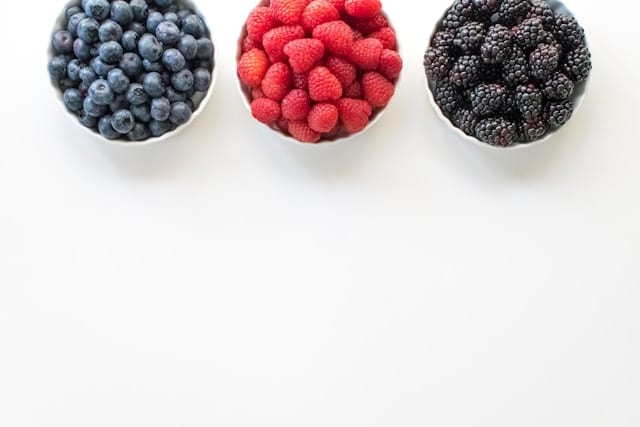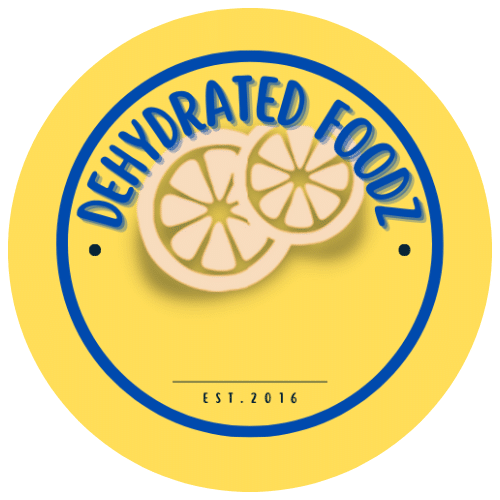Unlock the full potential of your dehydrator with The Ultimate Guide to Dehydrator Recipes! This comprehensive ebook is your go-to resource for crafting delicious, healthy, and long-lasting snacks and meals. Perfect for beginners and experienced dehydrating enthusiasts alike, this guide provides everything you need to know to boost your kitchen game.

The Best Guide on How to Pretreat Fruit for Dehydrating Efficiently
How to pretreat fruit for dehydrating is a question many home dehydrators ask. Getting your fruit ready for dehydration can make a big difference in taste and quality. It’s all about keeping the fruit fresh and tasty. Whether you’re working with apples, bananas, or berries, there’s a simple way to keep them from turning brown and losing flavor. You might dip them in lemon juice or use ascorbic acid, which is just vitamin C. These tricks help keep your dried fruits looking good and tasting great. So grab your favorite fruits, and let’s get them prepped for the dehydrator. It’s easier than you think!
Key Points:
- Understanding Fruit Dehydration: Fruit dehydration is a preservation method that removes water content, helping to prevent spoilage and retain natural flavor and nutrients.
- Preparing Fruits for Dehydration: Select fresh, ripe, and firm fruits, wash them thoroughly, and avoid bruised or overripe fruits for optimal dehydration results.
- Pretreatment Options: Pretreat fruits using methods like blanching, dipping in lemon juice or ascorbic acid, or sulfuring to prevent browning and preserve texture.
- Enhancing Fruit Quality: Use fruit juices such as lemon juice, or vitamin C to prevent browning, and consider adding citric acid with caution as it may alter flavor.
- Testing and Storage: Check for dryness by ensuring fruits are leathery and pliable; store in airtight containers in a cool, dry place to maintain quality.
- Understanding Fruit Dehydration
- Preparing Fruits for Dehydration
- Pretreatment Options
- Enhancing Fruit Quality
- Advanced Dehydration Techniques
- Testing and Storage
- Let's Wrap It Up
- FAQ's
- How do I test if dried fruit is properly dehydrated and how should I store it?
- How can I enhance the quality of dried fruits and prevent browning?
- What pretreatment options are available to prevent browning and spoilage during dehydration?
- How should I prepare fruits before dehydrating?
- What is fruit dehydration and why is it useful?
Understanding Fruit Dehydration
What is Fruit Dehydration?
- Fruit dehydration is a method of preserving fruits by removing the water content, resulting in a nutritious and lightweight snack.
- Dehydration helps to prevent spoilage and retain the natural flavor and nutrients of the fruit.
Preparing Fruits for Dehydration
Selecting the Right Fruits

- Choose fresh, ripe, and firm fruits for dehydration, such as apples, bananas, and berries.
- Avoid using bruised or overripe fruit to ensure optimal results.
- Wash fruit before cutting to remove dirt and pesticides, promoting a clean dehydrating process.
Pretreatment Options
Blanching

- Blanching involves briefly submerging fruit in boiling water to inactivate enzymes and preserve color and texture.
- Steam blanching is a recommended method for fruits like apples and pears.
- Syrup blanching combines sugar, corn syrup, and water to create a sweet and sticky coating.
Dipping
- Dipping involves briefly immersing cut fruit in a solution to prevent browning and spoilage.
- Common dipping solutions include lemon juice, ascorbic acid, and citric acid.
- Fruit juice, such as pineapple juice, can also be used as a dipping solution.
Sulfuring
- Sulfuring involves using sulfur fumes to preserve fruit and prevent spoilage.
- However, sulfuring is not recommended for indoor use due to the unpleasant odor and potential health risks.
Enhancing Fruit Quality
Preventing Browning with Fruit Juice

- Fruit juice, such as lemon juice, can be used to prevent browning and spoilage.
- Ascorbic acid, also known as vitamin C, is a natural preservative that can be used to prevent browning.
- Citric acid can also be used to prevent browning, but it may affect the flavor of the fruit.
Advanced Dehydration Techniques
Dehydrating Small Whole Fruits
- Small whole fruits, such as cherries and grapes, can be dehydrated using a process called checking.
- Checking involves briefly submerging the fruit in boiling water to speed up the dehydration process.
Dehydrating Fruit Leathers
- Fruit leathers are made by pureeing fruit and spreading it onto a dehydrator sheet.
- Fruit leathers can be made from a variety of fruits, including apples, bananas, and berries.
- Lemon juice or ascorbic acid can be added to the puree to prevent browning.
Testing and Storage
Testing for Dryness
- Dried fruits should be leathery and pliable, with no signs of moisture.
- To test for dryness, remove a few pieces of fruit from the dehydrator and let them cool to room temperature.
- Squeeze a handful of the fruit to check for moisture.
Storing Dried Fruit
- Store dried fruits in a cool, dry place, such as a pantry or cupboard.
- Use airtight containers, such as glass jars or plastic bags, to store dried fruits.
- Label the containers with the date and contents, and store them in a cool, dry place.
Let’s Wrap It Up
And there you have it! Getting your fruit ready for the dehydrator is a simple way to keep those tasty snacks fresh and full of flavor. Whether you’re using lemon juice, ascorbic acid, or a bit of fruit juice, these tricks help keep your dried fruits looking and tasting great. So go ahead, grab your favorite fruits, and give dehydrating a whirl. It’s easier than you think, and the results are deliciously rewarding. Happy dehydrating!
FAQ’s
How do I test if dried fruit is properly dehydrated and how should I store it?
Properly dried fruits should be leathery and pliable, with no signs of moisture. To test, cool the fruit after dehydration and squeeze to check for moisture. Store in airtight containers in a cool, dry place, labeling with the date for freshness.
How can I enhance the quality of dried fruits and prevent browning?
Use fruit juices such as lemon juice or add vitamin C (ascorbic acid) to prevent browning. Citric acid can also be used but may alter the flavor of the fruit.
What pretreatment options are available to prevent browning and spoilage during dehydration?
Pretreatments include blanching by briefly boiling or steaming the fruit, dipping in solutions like lemon juice or ascorbic acid to prevent browning, and sulfuring, although the latter is not recommended for indoor use due to odor and health concerns.
How should I prepare fruits before dehydrating?
Select fresh, ripe, and firm fruits such as apples, bananas, and berries, wash them thoroughly to remove dirt and pesticides, and avoid using bruised or overripe fruits for the best dehydration results.
What is fruit dehydration and why is it useful?
Fruit dehydration is a preservation method that involves removing water content from fruits, making them lighter and extending their shelf life while retaining natural flavor and nutrients.


